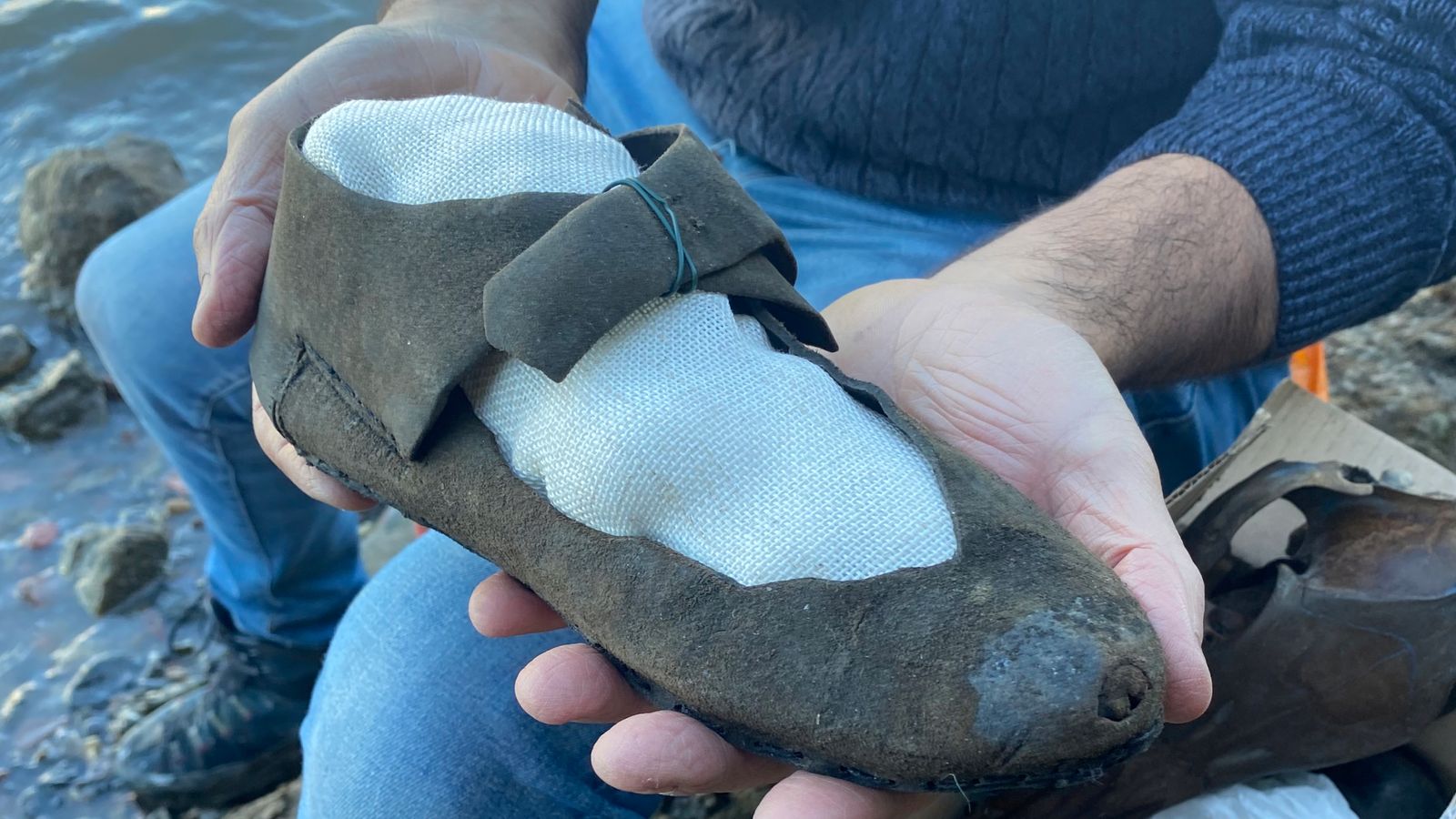If you wander down to the banks of the River Thames at low tide, any time of year, you’ll likely see figures crouched in the mud scraping and searching.
In centuries gone by, poor Londoners used to dig for things to sell, like bits of rope or nails.
They were the original mudlarks.
Now, the practice has become a popular hobby.
In fact, it’s so popular that the Port of London Authority have stopped issuing new permits for mudlarking.
“We’ve gone from about 200 foreshore permits issued four or five years ago to 5,000 now, and that’s a vast increase,” says James Trimmer, director of planning and development at the Port of London Authority.
“What we’re doing [pausing new permits] is protecting the integrity and the archaeology of the foreshore.”
London Fire Brigade is ‘institutionally misogynist and racist’, damning review finds
‘They said they had no space’: Family says boy, 5, died after he was sent home from hospital
England held to goalless draw against USA in second World Cup game
‘Your thoughts just go away for a while’
Mr Trimmer and his colleagues can stop any mudlarkers on the foreshore and ask to see proof of a permit, which costs £96 and lasts for three years at a time.
Alessio Checconi, a permit owner, discovered mudlarking during the pandemic when the country was in lockdown.
“I actually had probably one of the calmest periods of my life,” he says.
“And I think part of it was because of mudlarking.
“The main noise you hear is just the waves crashing against the shore – plus you focus on a spot, you scrape, you search and all your thoughts just go away for a while.”
What sort of things are people finding?
Historical items washed up by the Thames should be reported to the Museum of London.
But plenty of mudlarks get to keep their treasures – Mr Checconi may be relatively new to the hobby, but he’s already unearthed enough historical artefacts to fill his spare room.
His finds include an ornate ivory smoking pipe and a Tudor knife.
Mr Checconi has also found shoes that he has restored himself, working for months to repair the damage caused by hundreds of years underwater.
When he’s restoring these objects, he muses about the original owners’ lives and looks for clues about what they were like.
Showing the heel of a show he restored, which he estimates is about 300 years old, he says: “The person was probably walking a bit of a wonky way perhaps his leg was not too straight.
“In fact, it’s very squished on the inner side.”
A new wave of enthusiasts
The foreshore of the river, in parts of central London, has become an international attraction for mudlarks.
Popular books about mudlarking and social media have helped to inspire a new wave of enthusiasts.
The permit pause came as a big blow to Michelle Ronback, who lives in Canada.
After watching videos about mudlarking on YouTube during the pandemic, she booked a trip to London next spring with her sisters.
She hoped to venture down to the Thames foreshore and hunt for antiquities.
But Ms Ronback hadn’t yet bought their permits, and now it’s too late: “We’ve invested thousands of dollars to go on this trip, which can’t be amended because we can’t get refunds.”
‘Just fascinating’
Ms Ronback’s ancestors were British.
“You’re always curious about where you came from and how your ancestors lived and what was their life like and what kind of things did they use and things like that,” she says.
“It’s just fascinating to me.”
Ms Ronback will still come to London and hopes to witness mudlarking even if she can’t join in.
She’s optimistic that one day she’ll be able to take her trowel down to the Thames and look for washed-up treasure.








